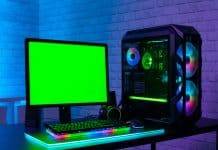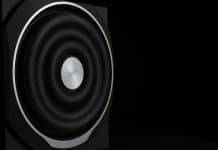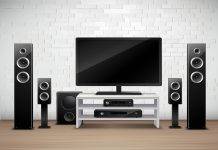
We are a participant in the Amazon Services LLC Associates Program, an affiliate advertising program designed to provide a means for sites to earn advertising fees by advertising and linking to amazon.com. As An Amazon Associate We Earn From Qualifying Purchases.
When the word big data comes under the spotlight, you know you will need a lot of hardware power to match whatever data that you seek. However, big isn’t a word one can quantify, making it a relative adjective. In fewer words, what we consider big data might not be what you call big data, regardless we would cover the best laptop for big data no matter how big plus you will get our pick the ✅Acer Nitro 5.
Best Laptop For Big Data Comparison Table
Tap the images below to get the best laptop for big data on Amazon.
Best Laptop For Big Data
Ideally, a rundown of what big data means would take a separate blog post because big data encompasses a lot of information and analysis.
Hence we will focus on just a few details about big data.
What is big data?.
Big data is a word that focuses on large volumes of data that are hard to figure out, and that includes structured/unstructured data used to analyze the markets daily.
Also, big data are analyzed to get insights that could result in better decisions and choices in business.
In other words, you can see big data as a tool used to check on daily happenings that help organizations make better decisions that keeps them in the game.
However, big data could sometimes be large, fast, or hard to comprehend.
Ever heard of the three V’s when it comes to big data?.
Ideally, everyone knows what volume is and that gets translated to amount.
The collection of big data for the organization comes from lots of options ranging from business transactions to social media, videos, audios, and a lot more.
In the past, such a volume of data will be hard to analyze.
But with the advent of Hadoop and data lakes that can manage large volumes of data with cheaper storage, it has become a simple process.
You can simply launch a map-reduce task directly into the Hadoop, and the results are displayed right back.
Also, platforms like Hadoop allow you to store large volumes of data in RAW format.
Next, we have velocity.
The internet has a lot going on, and such unexpected or planned data streams into businesses faster.
So, they need to be dealt with in a timely fashion.
Finally, as we know, data can come in any format, including video, audio, numbers, text, and many more.
And that is the last V-variety.
So in case, you didn’t get it, let’s line them out.
- VOLUME.
- VELOCITY.
- VARIETY.
Now let’s talk specs.
Specs Required For Best Laptop For Big Data
So everything we discuss would focus on which of the three V’s discussed above you use for work.
For the CPU, you should consider a powerful one when you have to deal with algorithms.
That is so because algorithms mean more data and, in turn, demands a strong CPU which could be an I7 or i8 chipset with model numbers U, H, or HQ.
So for low voltage, if you don’t work with much data, you can go for U.
But if you do, then go for H and HQ, which you will get in high-performance laptops.
Not to forget, if you use the cloud, you can go lower for an i3 chip and an 8th generation processor.
Equally important is to know that algorithms are also memory draining.
However, the amount of dataset you are working on would determine the RAM space.
If it’s large, then you should aim for 16 GB, although 8 GB might suffice.
Likewise, if you can get 32 GB, go for it.
Also, if you are using the cloud, 8GB will do.
Next, we have screen size/resolution.
Customarily you would always find no issues going for a 15-inch display screen in FHD.
Well, the same applies here when it comes to screen size/resolution.
SOME WORDS FOR YOU
As stated earlier, big data is a lot to cover in even one blog post.
Hence we had to narrow a lot of information to fit in while still covering the essential ones as you should know.
In a nutshell, for a laptop for processing big data, you’ll need above average processing power, impressive storage space, brilliant display, and incredible battery life.
Now let’s look at what our top selections for the laptops in this category have to offer.
Top Favorites For The Best Laptop For Big Data
1. Acer Nitro 5 Best Laptop For Big Data
Simply because we are not into the business of drilling holes into your pocket regardless of what you aim to achieve, we always consider the cost.
Hence we bring you an affordable and yet high-performing laptop in a solid chassis.
DISPLAY
As stated earlier, if you aren’t going for a 15-inch display screen size, you will find it hard to identify large datasets displayed on your screen.
More so, if you are going for 15 inches display screen, it is always better to go for the FHD display resolution.
Luckily, the Acer Nitro 5 offers both, including an IPS panel for wide viewing angles, which helps identify datasets no matter how unstructured or large they are on screen.
PROCESSOR/GRAPHICS/STORAGE
On this laptop, you will get the latest 9th generation processor, which is enough for data analysis.
And the chip would be an i5 making it run smoothly plus, let’s not forget you also get a processor that can handle the high-end specs available on the Acer Nitro 5.
Moreso, the memory comes together with the processor having an 8 GB capable of running any data analysis software/package.
And that includes models like simple statical models of small data sets.
Additionally, you still have the option of an upgrade to 16GB.
On the graphics side of things, you get graphics capable of running high-end gaming and more- the NVIDIA GeForce GTX 1650.
Likewise, it offers a storage space of 256GB PCIe NVMe SSD and one open slot for easy upgrade.
WEIGHT/CONNECTIVITY/BATTERY LIFE
It weighs 5.07 pounds.
And for connectivity, it has USB 3. 1 Type C Gen 1 port (up to 5 Gbps), 2 – USB 3. 1 Gen 1 Ports (One with Power-off Charging), USB 2. 0 Port, 1 – HDMI 2. 0 Port with HDCP Support.
Plus, regardless of what you are analyzing, you still need a battery life capable of handling the work on the Acer Nitro5 with 8 hours of battery life.
OTHER FEATURES
You can do more with the in-built Alexa at your command.
In conclusion, you can conveniently type in the dark thanks to its backlit keyboard.
WHO SHOULD GET THIS?
Perpahs you work with not-so-big data analysis, then you can go for this.
Also, you can do more with an upgrade.
PROS
- Firstly, it has upgradeable storage and memory.
- the laptop has a buff graphics card.
- Also, it is quite affordable.
- Slim and lightweight.
CONS
- Loud fan noise.
OUR WORD
You won’t get better specs for the price.
Purchase now on Amazon via the image link above.
2. Asus ROG Strix G
It’s no hidden fact that the best laptops out there are gaming laptops with high-end specs and outstanding features.
However, such gaming laptops come at a cost.
DISPLAY
What is any gaming laptop if it doesn’t offer the best resolution and the best display screen size at 15 inches?
The answer is a disappointing outcome for refresh rates and visuals.
Fortunately, the Asus ROG Strix G doesn’t disappoint by bringing visuals on a 15.6” inch Full HD 1920×1080 IPS display.
Also, you can conveniently split the screen when during your data analysis.
PROCESSOR/GRAPHICS/STORAGE
Nothing beats a laptop that offers high-end specs with a processor to match the high-end specs, with a chipset i7 and a 9 generation processor.
Given this, the processor in use is an Intel Core i7-9750H with 6-Cores and a
boost frequency of 4.50 GHz
For even more impressive performance, there’s 16 GB DDR4 RAM to assist the processor to execute high-demanding tasks.
On the other side, you have a graphics processor by Nvidia GeForce GTX 1650 with 4 GB of VRAM and a boost frequency of1560 MHz.
And storage capacity of 1TB PCIe SSD for the hard drive.
WEIGHT/CONNECTIVITY/BATTERY LIFE
Surprisingly, unlike most gaming laptops, this laptop isn’t so heavy weighing 5.28 pounds.
Plus, it uses a wireless type of connection from WI-FI 5 and has USB 3.0, 3.1 (Gen 1 and 2), and Type-C ports available.
The battery life also offers 3-4 hours of battery life.
OTHER FEATURES
To cap it all up, you never worry about overheating with this laptop.
This is all thanks to the ROG intelligent cooling thermal system with dual 12V fans, anti-dust technology, and adjustable fan modes.
WHO SHOULD GET THIS?
If you have extra cash to spare, then this is worth a try.
PROS
- Switching fan mode.
- There’s enough storage space.
- Also, it offers fast boot-up.
CONS
- Poor battery life.
OUR WORD
If you won’t be using cloud storage, the laptop has enough storage to support you.
Purchase now on Amazon via the image link above.
3. Dell XPS 13 9360 Best Laptop For Big Data
Dell comes with a laptop that is beautiful inside out.
DISPLAY
Unlike the laptops we have discussed so far, this one doesn’t offer visuals on a 15 inch.
Instead, it comes with a 13.3-inch display screen, and it combines that with a resolution in FHD, giving you better angles and better views.
PROCESSOR/GRAPHICS/STORAGE
The powerhouse here is an Intel 7th Gen Kaby Lake i5 7200U, a dual-core processor, and an 8 GB SDRAM.
Then, you get an Intel HD Graphics 620 card for processing graphical content.
Lastly, for sand storage space of 128 GB M.2 SATA SSD.
WEIGHT/CONNECTIVITY/BATTERY LIFE
Contrary to previous laptops, this one is light, weighing 3.07 pounds.
Plus, you get wireless connectivity from Wi-Fi 802.11ac, Bluetooth 4.1, and wired connectivity from USB 3.0, USB-C, Thunderbolt 3 via USB Type_C, Card Reader.
With the Dell XPS 13 9360, you get a battery life of 4-6 hours.
OTHER FEATURES
It has a touchscreen, a webcam, and a backlit keyboard.
WHO SHOULD GET THIS?
Perpahs you need a laptop for smaller data sets, this is it.
PROS
- Lightweight.
- It runs fast.
- Lastly, this laptop’s screen has minimal bezels.
CONS
- It has an off-camera placement.
OUR WORD
The laptop is for those who use CUDA (compute unified device architecture) for parallel computing.
Purchase now on Amazon via the image link above.
4. Apple MacBook Pro
Undoubtedly Apple laptops and data analysis software/applications are a match made in the stars above.
However, the only downside is that Apple laptops cost a lot.
DISPLAY
This Apple laptop comes with a 13.3-inch Retina display screen that allows you to see details and clear images in FHD+.
In addition to its brilliant display, the Apple Macbook Pro has a nicely-fitted 720p HD Camera for unlimited video chat.
PROCESSOR/GRAPHICS/STORAGE
Furthermore, the Apple Macbook Pro is powered by an 8- core M1 chip CPU.
The M1 chip is Apple’s first-ever/innovative CPU designed to deliver 2.8x faster performance than regular CPUs.
So, you can rest assured that working with big data on this laptop will be as swift as possible.
But that’s not all.
Apple adds 8 GB of RAM, making everything you do fast and fluid.
Even more, Apple also included an 8-core GPU that can efficiently handle graphics-intensive tasks and cope with a few games.
However, bear in mind that this is not a gaming laptop.
To conclude this section, apple included a 256 GB SSD storage for the hard drive.
WEIGHT/CONNECTIVITY/BATTERY LIFE
The Macbook Pro is lightweight at 3.0 pounds.
And for connectivity, it has Wi-Fi 802.11ax for wireless connection, plus several ports available.
Finally, it has an impressive battery life of up to 20 hours.
OTHER FEATURES
In addition to the above, the display features an LED-backlit with IPS technology.
Lastly, there’s a Touch Bar and Touch ID for recognition.
WHO SHOULD GET THIS?
If you are looking for the best portable and lightweight laptop for data analysis, you have found it.
PROS
- Bright display.
- Impressive battery life.
- M1 chip.
- Impressive performance.
CONS
- The screen size is a little bit too small.
OUR WORD
This is an excellent laptop that can run all data software except parallel computing with CUDA due to the GPU.
Purchase now on Amazon via the image link above.
5. ASUS ZenBook 15 Best Laptop For Big Data
Who says as a data scientist, you can’t opt for style and innovative designs.
We believe anyone can work in style.
Hence, we give you Asus’s most stylish and creative laptop, the Asus Zenbook 15.
DISPLAY
The ZenBook offers a wide viewing angle of 178 degrees and an almost frameless edge that gives you more screen to work.
Besides that, it projects visuals on a 15.6-inch wide-view Full HD display screen.
In addition to the display, it has a 92% screen-to-body ratio.
PROCESSOR/GRAPHICS/STORAGE
This laptop isn’t all about style.
It also performs excellently.
The ASUS ZenBook is powered by a quad-core Intel Core i7-10510U Processor with a clock speed of up to 4.9 GHz and 8MB cache memory.
There’s also a RAM space of 16GB LPDDR3 that backs the processor and enables it to handle complex computing tasks.
Inclusive with the above-listed specs is the NVIDIA GeForce GTX1650 Max-Q discrete graphics to handle all your graphics demanding activities.
Then you have ample storage space with 1TB PCIe NVMe SSD for the hard drive.
WEIGHT/CONNECTIVITY/BATTERY LIFE
In terms of weight, it weighs light at 3.6 pounds.
And for connectivity, it has USB 3.0, 3.1 (Gen 1 and 2), or Type-C.
The battery life offers up to 10 hours.
OTHER FEATURES
In conclusion, it has an innovative screen pad that allows you to access every function of your laptop with the touch of a button.
WHO SHOULD GET THIS?
If you like a stylish yet high-performing device for data analysis or mining, then this is it.
PROS
- Screen pad available.
- Quiet laptop.
- Smooth trackpad.
CONS
- No touchscreen.
OUR WORD
Once again, it is for those who desire a stylish and efficient work device.
Purchase now on Amazon via the image link above.
6. Lenovo Ideapad L340
Next, we have Lenovo with a laptop that defines affordable.
DISPLAY
The display is in line with the price, and it’s the best you can get for the price.
Perhaps you have no idea what the display screen size/resolution is.
It is a 15.6 FHD.
In addition to the display, it has an IPS panel that gives wide angles and brighter pictures.
PROCESSOR/GRAPHICS/STORAGE
Lenovo designed this laptop with an Intel Core i5-9300H Processor and an 8GB DDR4 RAM
It also features a high-performing NVidia GeForce GTX 1650 graphics card to allow you to work effectively with your graphics demanding software.
in addition to that, you have a 512GB NVMe SSD to store all your work files.
WEIGHT/CONNECTIVITY/BATTERY LIFE
It weighs 4.84 pounds.
And for connectivity, it has several ports, such as one USB-c port, HDMI-Out port, Ethernet port, Kensington Lock port, 3.5mm combo audio port, etc.
Lastly, the average battery life is 9 hours.
OTHER FEATURES
Thanks to the Vantage Eye Care feature, you can work for long hours without straining your eyes.
WHO SHOULD GET THIS?
If you don’t have so much cash to spare, you can get this.
PROS
- Eye protection.
- It’s a budget-friendly laptop.
- Three settings for the keyboard.
CONS
- Less room for upgrades.
OUR WORD
It is budget-friendly.
Click to BUY NOW ON AMAZON.
7. Acer Swift 3 Best Laptop For Big Data
As the name implies, it is swift, thin, and light.
DISPLAY
This beauty in all silver chassis offers clear visuals from its 14-inch display and in FHD.
PROCESSOR/STORAGE
With this laptop, you have an 8-core AMD Ryzen 7 4700U with a clock speed of up to 4.1 GHz for processing your big data.
Backing up this powerful processor is an 8 GB RAM.
Likewise, the graphics come from AMD Radeon Graphics, and the storage space offers a 512GB PCIe NVMe SSD for the hard drive.
WEIGHT/CONNECTIVITY/BATTERY LIFE
It weighs 2.65 pounds.
Also, you can establish a connection with this laptop or other devices using any of the following ports available; USB Type-C port USB 3. 2 Gen 2 (up to 10 Gbps) DisplayPort over USB Type-C & USB Charging, USB 3. 2 Gen 1 port (featuring power-off charging), USB 2. 0 port & HDMI port.
Moving on to the battery life, it offers up to 11.5 hours.
OTHER FEATURES
It also features a fingerprint reader.
WHO SHOULD GET THIS?
If you are interested in the world of data science, this would be a good start.
PROS
- Fingerprint reader.
- Strong build quality.
- Powerful graphics processor.
CONS
- Screen quality could be better.
OUR WORD
Once again, if you want to learn the do’s and don’ts of the data world, you can start here.
Purchase now on Amazon via the image link above.
Final Verdict For The Best Laptop For Big Data
In the end, there are several laptops suitable for big data.
However, only the best can get the job done excellently.
Hence, we picked the ✅Acer Nitro 5.as the best of them all.















